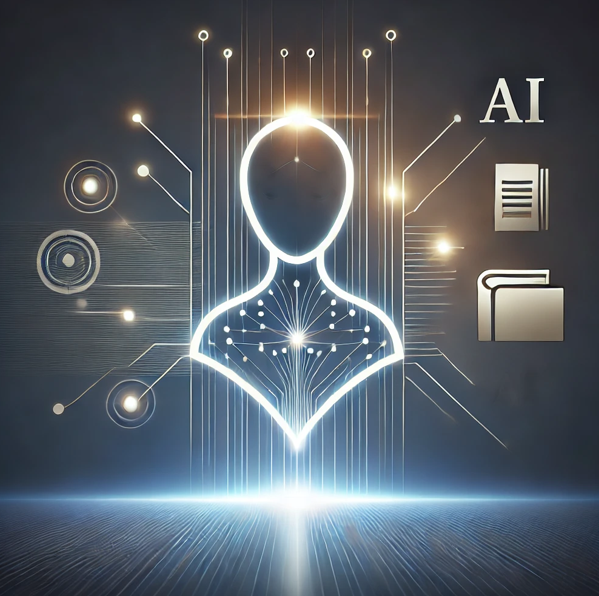Thinking of Adopting GenAI? A Practical Starting Point for Executives
- Andrew

- May 8, 2024
- 3 min read
Updated: Mar 19
Last Updated: October 21, 2024
Editor: Andrew
Generative AI has become a powerful tool for reshaping business models and driving innovation, particularly through the creation of new content, automation of creative tasks, and improving personalization in customer experiences. But, many executives in large businesses still ask: where do we begin? Understandably with the overwhelming pace of AI advancements, the first step can feel daunting. To all those executives sitting on the sidelines the answer is straightforward: start experimenting - now. In this guide, we’ll outline practical first steps for AI adoption and explain why beginning now is more critical than ever.
Why GenAI Adoption Is Critical for Business Leaders
Generative AI has become essential for staying competitive. GenAI enables content generation, automates creative and complex tasks, and provides personalized experiences, all of which enhance efficiency and foster innovation. Companies that embrace GenAI can better scale operations, unlock new revenue, improve customer experiences, and make better decisions—while those that hesitate risk falling behind more agile competitors.
Overcoming Initial Hesitations
Many executives hesitate due to concerns about GenAI's complexity or technical requirements. But every successful GenAI journey starts with small, manageable experiments. Rather than waiting for the perfect conditions, start with low-risk generative GenAI tools, such as text generation platforms or image creation tools. This hands-on approach helps build confidence and provides valuable insights into GenAI's practical benefits for specific business use cases.

Key First Steps to Generative AI Adoption
Assess Your Business Needs
Identify where generative AI can add the most value. Do you need help generating content for marketing campaigns? Are your customer service responses lacking personalization? Do you need creative automation to produce images or text efficiently? These areas are prime for AI-driven solutions.
Start Small
Avoid the misconception that AI requires large-scale investment. Start with generative AI tools, like AI content generators for blogs and marketing or AI chatbots to enhance customer interactions, to reap immediate benefits without overwhelming your teams.
Experiment and Iterate
Test AI solutions that align with your needs, such as analytics platforms or automation tools for repetitive tasks. Review outcomes, iterate, and refine—continuous evaluation is key to successful adoption.
Monitoring AI Developments
The AI landscape evolves rapidly. To stay competitive, businesses need a process for regularly evaluating AI advancements. Assigning someone to monitor trends and assess new tools ensures your company doesn’t miss opportunities to improve.
The Importance of an AI Governance Policy
AI governance is crucial—particularly since employees are likely already using AI tools, approved or not. Surveys show that over 80% of employees use AI at work, often without official guidance. To mitigate risks like data breaches and compliance issues, develop an AI governance policy that clearly outlines approved tools, usage guidelines, and privacy measures.
Practical Generative AI Applications
Start small, and you'll see results. Consider these examples:
A marketing firm used generative AI to automate the creation of social media posts, resulting in a 40% increase in engagement.
A customer service team implemented AI-powered chatbots that generate personalized responses, boosting customer satisfaction by 30%.
An e-commerce business adopted generative AI to create product descriptions, cutting down the time needed for content creation by 50%.
These businesses didn’t overhaul operations; they began with targeted applications that quickly proved their value.
Common Generative AI Adoption Challenges and Solutions
Training as a Barrier: The number one barrier to GenAI adoption is training. Companies need to improve the AI-literacy of their employees to effectively leverage these tools. An excellent source of training comes from the Marketing AI Institute.
Lack of Technical Expertise: Begin with user-friendly generative AI platforms like ChatGPT, or partner with vendors who specialize in generative AI tools.
Integration Concerns: Start with plug-and-play solutions that easily integrate with existing systems.
Cost Barriers: Many AI tools are now accessible at different price points.
Building a Generative AI-Ready Culture
AI adoption isn’t just about technology—it’s about people. Foster a mindset of experimentation, encourage learning, and prepare teams for change. Provide training on generative AI tools, such as text and image generation, and ensure key stakeholders understand how these tools can enhance creativity, efficiency, and customer engagement. An AI-ready culture is crucial for long-term success.
Summary
The key to generative AI adoption is to get started. Businesses can unlock the full potential of generative AI by taking these actions:
Implementing an AI governance policy.
Enroll in generative AI training and AI tool specific training courses.
Experimenting with tools that create new content, improve customer support, improving onboarding, improve accessibility to enterprise information, automate operations, and generate new ideas.
Staying informed about new developments.
Generative AI is not a spectator activity. You have to step in and start experimenting now to discover how to take advantage of this powerful technology to position your business to thrive in the AI-driven future.



